Eagle Windows -- Defective Design
I am a construction consultant and have been working for several years now dealing with problems with Eagle Windows and believe that there is an inherent design flaw in how they construct their windows. The problem manifests itself particularly with their "Auxiliary Units", that is, their fixed pane windows.
The problem is that they are designed with the presumption that none of the sealants, joints or other mechanical connections in the frame or interfaces between the glass, wood and metal will ever fail. But if they do fail, problems of moisture intrusion into the structures behind the windows and the wood members of the windows themselves can deteriorate for a long time, undetected. Once this intrusion is finally detected though drywall damage, mold, or other problems, usually significant internal deterioration has already taken place.
Most windows I've encountered over the 40+ years in the construction field are designed to have secondary or tertiary mechanisms to allow any water that gets past the first line of defense to escape. Channels and weep holes are typical of these devices. Many windows are stopped in from the outside and have a vertical barrier to wind driven moisture at the interior side of the glass in addition to the interior sealant.
Eagle Windows are designed in such a way that the permanent stop that the glass is sealed to is located outside the glass, i.e. the glass is set from the inside. The glass is set in a glazing bed about 1/32" thick and about 1/4" wide. The corners of the metal frame are simply mitered and screwed together. There is a tiny bead of sealant at these joints. An optional "sill nose brickmold" snaps up into the bottom of the frame with a small ~3/32" fin and into a field applied sealant. Brickmolds are not integral with the main frame. The glass is stopped in on the inside with a small wooden moulding. This moulding has a thin foam weather stripping between it and the glass.
The ultimate result of this design is that waterproofing of Eagle Windows is SOLELY reliant on sealants/caulking. As wind and temperature changes move or expand and contract the multiple different components of the windows, the sealants slowly or rapidly deteriorate and moisture penetrates. When the glazing setting bed of sealant fails, water migrates directly to the wood frame of the window. I've seen thousands of dollars of damage to high end millwork, hardwood floors and carpet as a result.
There is no good repair to this condition other that perhaps removing the glazing from the window frames and installing some type of weep system. We are currently exploring this option.
Which brings me to my last point. If you explore the history of Eagle Windows, they have recently changed hands/ownership every few years. A client won a $146,000 judgment against them only to find out that shortly before the judgment was rendered, Eagle was purchased by its creditors, and in doing so the purchaser wrote into their documents that they assumed none of the liabilities of the former company. Same name, same president, same address, just a different company. When we tried to execute on the judgment, their attorney threatened to sue using their liability waiver and the claim that they were no longer the same company as the basis of the threat.
They were then purchased a year or two later by Anderson Windows, but continue to operate under the same name, in the same location and continue to use the same defective designs.
If you are considering using Eagle Windows (or any other windows for that matter), carefully analyze the window's design details in light of my comments. I hope this will help at least one person from making the mistakes several others are dealing with.
Comments (63)
carpy2009
15 years agolast modified: 9 years agoIbwindows yes I did that test and you are right on. The windows is loosing its seal. I just found out that the bulb seal eagle uses is hollow, so is prone to shrinkage. i am still trying to get them to come and change the bulb seals in all the windows with a solid core ones. To bad that this company has sooooo poor customer service.
ibwindows
15 years agolast modified: 9 years agoActually a bulb seal, because it can be compressed more then a solid should be giving you a better seal. If the bulb is shrinking due to temp, your problem is.... it is barely touching at higher temps. You want that bulb to be smashed flat when the window is closed and locked. Solid core isn't the solution IMHO.
Related Professionals
Boston Window Contractors · Clarksburg Window Contractors · Vero Beach Window Contractors · Edwardsville Window Contractors · Hesperia Window Contractors · Muncie Window Contractors · Tucker Window Contractors · Country Club Hills General Contractors · DeSoto General Contractors · Foothill Ranch General Contractors · North Tustin General Contractors · Owosso General Contractors · Wallington General Contractors · Golden Glades Carpenters · Sudbury Carpenterscarpy2009
15 years agolast modified: 9 years agothen what solution I should be having to correct the problem?
the seal is pancake flat. if the seal have an inner core then there is constant pressure which in turn would keep its original state, no where to get flatten.ibwindows
15 years agolast modified: 9 years agoWithout actually seeing it my first fix would be a slightly larger bulb that remains flexible in cold weather.
With solid it's gonna bottom out where ever it first touches
verify
15 years agolast modified: 9 years agoTo asfraser
Sounds like you and I have had similar problems with water penetration around and underneath the Eagle windows. Water penetrated usually under the half circle and radius windows either with or without the mullion joint. I'd like to know how you performed your water test and if you noticed water behind the miter joints of the aluminum cladding or rotting the OSB beneath the windows.Have you also had water entering the interior going around the window pane unto the inside sill and unto the floor.l4sley
15 years agolast modified: 9 years agoHave the same or a similar problem with Eagle windows and doors. would be interested in knowing more about the law suit and any other information you might have as Eagle is not living up to their warranty. can you provide more details. Thanks. Greatly appreciated.
bigman
15 years agolast modified: 9 years agoWe have had Eagle windows for 20 years and have had nothing but problems. After years of caulking and tearing all the siding off to re-do we have finally come to the conclusion that the window seals leak in heavy wind/rain storms. We are replacing all with Anderson.
asfraser
15 years agolast modified: 9 years agoTo verify, 14sley, Bigman
I am not surprised to hear that you have similar problems. We have currently got a warranty claim with Eagle who are sending out another tech to inspect the windows this week. Their distributor had offered to try and caulk the leak, but we feel this is just simply a bandaid to the problem because caulking is not warranted for 20 years and all the windows leak which indicates not just poor workmanship on one particular window but a fundamental design fault for fairly heavy wind and rain issues. As to the note posted by VERIFY sorry I haven't checked this web page for quite some time. The water did get into the interior with wet carpeting and this is how we realised there was some problem. You need to pour water onto the side of the windows above the side jambs (keep your screens in). The volume of water will build up that you will notice water coming up in the joint where the window sits. Sorry I am not familiar with technical jargon but am happy to provide anymore information that I can. I will check this website much more frequently now that more people are coming forth. I will let you know how the warranty claim is going!!!!!
jackjack
14 years agolast modified: 9 years agoNot sure what made me to decide to look at this site today, but I am sure glad I did. My only post was back in 2006 when I was desperately seeking information about my leaking Eagle Windows and the damage that was caused. It appears there are more homeowners with the same exact problems that I have experienced. Back in 2006 according to Mike35 where he states "your problem goes way beyond windows". My question to Mike35......Is it just a coincidence that the damage to the windows, framing, sheeting and siding just happened to be located at the bottom corner of each first floor window (second floor windows protected via eaves). Lets assume the windows were installed according to the Eagle installation instructions provide at that time, which they were - I installed them and my Eagle rep was at the jobsite from time to time checking up on progress. Why did the "Sub Sill" come into existence, It was not mentioned in 1995? Did asfraser have the same installer? Dont think so. It is obvious to me, and apparently to others, the windows to not drain away water properly, therefor water soaks up into the foam behind the vinyl side jamb inserts, then over time seeps between the sill and wood side jambs into the framing and beyond. I feel fortunate I had wood siding, If it were vinyl or brick you would never see the problem. I feel sorry for those homeowners!
verify
14 years agolast modified: 9 years agoI recently had an independent lab(TLS Laboratories) out of California test a small number of my windows and doors and found a > than 50% failure rate of preventing water penetration and 75% failure of the installation procedures. So you can see I've had the perfect storm occur and consequently I will need a major renovation. If you live on the coastline of a large body of water Eagle windows do not perform.
verify
14 years agolast modified: 9 years agoI forgot to ask asfraser how is the warranty claim going? I ALSO AGREE with jackjack that if I did not have wood siding I also would not have noticed the window problems and the installation deficiencies!
lake_effect
14 years agolast modified: 9 years agoI have same condition as asfraser. I do not have screens installed and it still gets rain water blown under the side jam extrusion where it meets the sill. Behind this extrusion is just some thin foam and bare wood that is wet for @6" up and water weeps down. I had my contractor here yesterday doing water testing and the water is going out over my house sheeting and down to my foundation sill and then coming back into the house into the basement. Unfortunately we only figured out it is this window design issue after replacing damaged wood rot of window trim and house sheething and pulling the siding and replacing the house wrap. I now know my house is tight behind my siding but the windows leak. I view the design fault is that the side frame behind the extrusion is bare wood and the 90 deg joint of sill to side frame is not waterproofed or sealed. My plan is to pop out the jam extrusion and polyurethane the wood to waterproof it (but allow it to stay clear to inspect for future water leak) and silicone caulk at the 90 deg joint. I will then snap the extrusion back in. I do not plan to seal the extrusion at the bottom so if water does get in this cavity it can drain out the bottom and onto the sill and out the front as it should. I will probably seal the front seam of the extrusion running up the jam as this is just a snap fit joint. Does anyone have experience of repairing these windows or comments on my plan? Thanks!
lake_effect
14 years agolast modified: 9 years agoI actually put my screens back in hoping that wind driven rain will get slowed down, is this a bad idea that will cause a pool? My additional plan is to convert the exterior window screens into storm windows by attaching plexiglass or thin sheet glass to the screen frame. Thoughts? Thanks!
lake_effect
14 years agolast modified: 9 years agoFinished the urethane base covered by silicone caulk. Ended up able to smear the silicone up the wood jam 2-3 inches. Decided to remove screens per comments here about pooling. I could clearly see how with the screens in the window that the sill will not drain easily and the top of the screen frame is as high as the bottome of the window. Also since my leaks have happened without screens installed I wanted to keep the conditions the same thru the next wind driven rain event to test the fix "apples to apples". Will post when I find out if it worked but honestly do not see how it couldn't but water is a tough battle....
rpakett_yahoo_com
14 years agolast modified: 9 years agoI believe I just found the problem of the leaking Eagle window. When the rubber weather strip on the top of the bottom of the window deteriorates the seem under it is not sealed. With screens the driving rain is diverted. Without the screen the rain is pushed under the window and down usually starting at the corners. I placed saran wrap under the window today while it is raining and leaking and it stopped the leak!. I also removed sheetrock from under the corner and poured water on the seam. I was able to see the water dripping down. I will remove the old weatherstrip, silicone the seam and replace with a new weather strip.
lake_effect
14 years agolast modified: 9 years agoHave now had wind driven rains with no leaks! Have opened window jam track to verify caulk is holding and working! FYI: Corner leak was also happening on Simonton Quantum II vinyl replacement windows leading me to believe that many manufacturers do not seal the corner of the sill to jam very well.... A tube of silicone goes a long way to stop this from already installed windows and/or if new install then install sill drip pans in the wall opening prior to installing the windows. Please note the leaks were not obvious, I pulled the insulation out of the joist headers in my basement below the windows to discover water leak evidence and track back up. I suggest homeowners look behind the joist header insulation in their basements under windows for this sleeper problem. No leak and the insulation was pink and wood looks new, leak and insulation was blackened and the wood showed signs of water staining or actually wet in heavy rains. Hope this helps others with these sleeper water problems that will rot wood over time!
skydawggy
14 years agolast modified: 9 years agoSimonton doesn't make the Quantum II window. It used to be made by Kensington Windows until they were purchased by Serious Windows.
lake_effect
14 years agolast modified: 9 years agoThanks for the correction. They are Kensington. I assume they would not be covered by any warranty after banckruptcy and new ownership.... The installer is also out of business so that "lifetime transferrable warranty" is useless. Caulking the seam from sill to jam has stopped the corners from leaking in wind driven rain. Basic point is that many window brands seem susceptable to this corner leak in wind driven rain issue and having a secondary water management like a sill pan in the rough opening is a good idea to keep water on the exterior house envelope. Also found an interesting tutorial for additional suspender & belt water management with flashing at albertsroofing.com.
verify
13 years agolast modified: 9 years agoTo asfraser
Sorry I haven't checked this site for a long time since we were busy with remediation starting last Aug 2009 and finishing in Feb. Since mediation was fruitless we had to start a lawsuit against Eagle and our first builder. How is your warranty by Eagle proceeding?To lake-effect
I think a construction consultant like catalyst has had experience fixing the Eagle window defects.I have replaced almost all of my eagle windows with Andersen's and we will know soon enough if they work better than Eagle's.
afsa
13 years agolast modified: 9 years agoverify, that's interesting. Is Anderson doing anything price wise to help you out as they are now the proud owners of Eagle Windows.
grapefam
13 years agolast modified: 9 years agoIn 2008 after a period of heavy rains, my husband and I began smelling an increasingly bad smell toward the west end of our fully bricked home. Upon opening the wall, we found moisture within the wall of our home, concentrated in the area of our Eagle windows. There was moisture and mold on the exterior side of our polyurethane vapor barrier and the fiberglass insulation was quite wet. While there was no obvious water staining, there was some mold on the OSB sheathing most concentrated in the area below the windows and adjacent to the heads.
Over 20K was spent to determine the source of the problem and correct it, including mold testing & remediation and hiring consultation from an engineering firm that told us the problem was due to improper installation of the windows throughout our home.
Per the engineer's recommendations and with his oversight, the limestone sills were removed and flexible through-wall flashing with end dams tied into the bottom of the nailing fins were added. The sills were reset at an angle to increase water run-off, and the sills were set lower allowing for a more adequate 1/4" sealing space. The sill head joints were also raked back allowing for improved sealant space. The existing sealant was removed and commercial grade sealant was professionally installed around the perimeter and sill head joints. In addition, the fiberglass insulation in the shim spaces was removed and minimally expanding closed cell urethane foam insulation was installed in the shim spaces to decrease air flow. Spray foam insulation was put in the walls and new drywall was put up and painted. We thought the problem was finally behind us. This summer we purchased another home to live closer to family and put ours on the market.
Now, here we go AGAIN! The home inspector for potential buyers used a moisture detector and found moisture at the bottom corners of two window sills, same west wall. After heavy rains, we're once again having a noxious smell in our home. Initially we thought it was just off-gassing from the new products in our wall, and upon having the engineer return to our home we were reassured that's all it was. Yet over this past week, the smell has become worse. Obviously we can't sell our home with this problem (and we wouldn't attempt to). This whole situation has become a financial nightmare.
Is there anyone out there who knows of a good construction consultant in our area having experience with this? (Eastern IA near NW Illinois and SW Wisconsin) We're becoming desperate to figure out how to fix this problem and don't know what to do! We're not positive it's the Eagle windows but we're wondering. Catalyst, where are you???
grapefam
13 years agolast modified: 9 years agoForgot to mention, our home is only 8 years old. Unfortunately, though, it appears there may not be much recourse there since apparently the previous owner served as the general contractor, and he was unlicensed. We'll never make THAT mistake again!
maguirecb
13 years agolast modified: 9 years agoWe have just discovered thousands of dollars in damage to my parents lake house due to Eagle Windows. Water has been leaking for years and has rotted out everything behind the walls and below the windows. We had no idea until we went to replace a window sill and discovered the mess. Has anyone had any luck pursuing legal action against this company?
willinak
13 years agolast modified: 9 years agoThis thread is upsetting. I just looked at Eagle casements and DH's and found them to be quite nicely constructed. No, I didn't test them for water penetration, but they do make a good looking window.
Has there been changes made recently that have corrected the previous issues?macv
13 years agolast modified: 9 years agoI used Eagle aluminum clad double-hungs on a house on the ocean on Cape Cod. Almost immediately they leaked from wind driven rain and the rep had to make repeated visits to fix them. I believe the problem was the glazing seal to the sash.
Anderson is a window company but it was Andersen that bought Eagle.
willinak
13 years agolast modified: 9 years agoMACV, re water intrusion issues, on another post you mentioned "Both the Integrity DH and the Ultimate DH windows need a projecting sub-sill added to avoid water intrusion problems since neither has a proper drip at the nose of the sill". Could that have been the same issue with the Eagles? I'm curious if was the clad seal, sash seal, etc. Could you find out, please?
I think there is so much written here with window problems here that a causual reader would be totally confused. All windows have some issues, and couple that with installation issues, then you have a perfect storm.jackjack
13 years agolast modified: 9 years agoBeginning to look like someone with Legal Knowledge ought to get a class suite going against Eagle/Anderson.
whitecap
13 years agolast modified: 9 years agoInteresting thread. So the original Eagle went belly up and left its customers holding the bag. But how have the insurers managed to get off scott free? I'm not a lawyer, but I've been involved in several situations where the bankruptcy court having jurisdiction allowed litigation to proceed to the extent insurance coverage is available. The policy of insurance would have to be examined by a skilled eye to determine if there is anything there to pursue and, if so, whether the inevitable exclusions can be finessed. I also wonder if some recourse might not be available against the insurers of some of these rogue contractors.
brickeyee
13 years agolast modified: 9 years ago"Beginning to look like someone with Legal Knowledge ought to get a class suite going against Eagle/Anderson."
Pella is presently defending itself in a class action suite over similar problems (part of it made it to the Supreme Court)..
The whole idea of cladding wood to 'protect it' has never worked for very long for anyone.
Moisture eventually gets through, and then hidden rot starts.
millworkman
13 years agolast modified: 9 years agobrickeyee, I have seen you state the same thing many times over and am curious as to your definition of very long in this statement?
"The whole idea of cladding wood to 'protect it' has never worked for very long"
chade_x_yahoo_com
12 years agolast modified: 9 years agoI am an employee of Eagle Windows in Dubuque. Since everyone here has been having problems, does anyone have a possible solution. It seems to me that everyone now-adays wants to sue someone else. I know for a fact that our customer service reps bust their humps to fix problems. If you find a perfect design that will never fail then you should sell it to us, then maybe we can make 100% of people happy 100% of the time. I do believe that is why there are different company's out there selling the same product.
mountntop
12 years agolast modified: 9 years agochade.....you make the windows.....you take our money.....you find a better way.....i'll buy a different window for now!!!!!!
lake_effect
12 years agolast modified: 9 years agoWell my neighbor has the same issue, same windows...Eagle is consistent... Chade, a possible solution - design to manage secondary water leaks like wind driven rain going thru seams (unsealed in this case...stupid...). An integrated drip cap, flashing and sill pan to drian out over the next course of siding below like the albertsroofing.com solution.... Basically design for belt and suspenders with primary and secondary water management and design to make "contractor" proof for installation mistakes. Want a great solution, come to my neighborhood to learn and see the issue first hand and fix our windows for free....
cpcoyne_hotmail_com
12 years agolast modified: 9 years agoAll of this bankruptcy talk is incorrect. Eagle's parent company at the time was AAPC (American architectural products). They went bankrupt and as a result were forced to sell eagle since it was their only profitable company it owned. I have been an Eagle dealer for over 15,years. Has there been problems? Sure. All companies have and deal with them. There are no design flaws as stated earlier. Numerous factors go into water leaks. Sometines window issues sometimes install sometimes surrounding areas. I have been very satisfied with Eagle's service not only to me but,my customers as well. They do take care of problems that are theirs. Some people have hidden agendas here.
grapefam
12 years agolast modified: 9 years agoJust wanted to give an update on the outcome of our home situation. After hiring a very knowledgeable moisture intrusion expert from Des Moines, we learned that there were areas of defective mortar in our fully bricked home. Since there were no weep holes or flashing in the brick walls, and since there was moisture trapped behind our walls after very heavy wind-driven rain, on really hot summer days a pressurized vapor developed behind our brick. Having nowhere else to go, the vapor was being driven into the areas of least resistance which were around our windows and on into the wall cavity. If the windows had been installed perfectly, this may not have been a problem, yet the contractor who installed the windows didn't run a continuous bead (without seams) around the nail flange. We ended up removing brick off the west and south sides of our home and replacing it with vinyl siding since these were the sides of our home that developed problems due to the direction of wind-driven rain and the sun against our home. So, yes there are many factors to consider when there's moisture intrusion. (And by the way, 3 highly respected masonry contractors in our area couldn't find the problem. Each said it wasn't our brick veneer. Yet it was, though primarily from moisture getting through the mortar, no weep holes or flashing, and not having pristine window installation. Our moisture intrusion expert states he has been seeing many homes with similar problems the past few years.)
windowguymass
12 years agolast modified: 9 years agoAfter selling doors and windows for many years, I find this original post disturbing. Windows and or doors are to be installed per the manufacturers instructions. That's what code reads. There are so many installers that cut corners and create shortcuts. Paying attention to what your builder/architect/supplier is doing is important to the success of your project. If there is something wrong and you're getting water infiltration, there are methods to determine what's happening. If the water is coming from between the glass and the cladding then it may need to be reglazed or apply a cap bead to eliminate the problem. 99.9% of the time water is introduced around the perimeter of the window. Much like what the September poster experienced. I have had extreme success with Eagle products. PAY ATTENTION TO WHAT'S GOING ON. Do your homework, every supplier has problems. People make mistakes. Read the instructions. Window suppliers must provide independant testing of their product for performance ratings. Informed consumers make better decisions.
brickeyee
12 years agolast modified: 9 years ago"I have seen you state the same thing many times over and am curious as to your definition of very long in this statement?
"The whole idea of cladding wood to 'protect it' has never worked for very long""
At least till the mortgage on the house is paid off, so 30 years.
The idea of 'no maintenance' has taken hold so badly it is ridiculous.
If you own a house it requires maintenance.
Perform it or pay the price in the long run.
You can get windows that can be maintained (and then maintain them) or install 'maintenance free' windows and pay for the damage they allow and new windows.
Correctly maintained wooden double hung windows last a LONG time.
One of my houses has many that are over 200 years old.They have been maintained, and even in most cases improvements have been made including better weatherstripping, improved sash cords, sheet foam insulation in weight pockets.
A few needed some sash parts replaced (PO did not do maintenance on some second story windows).
toddinmn
12 years agolast modified: 9 years agoAlot of the advantages of old wood windows has to do with type of wood used and that they used storm windows that protected them.They also had the advantage of being able to usevery durable lead paints.Most of the wood used in modern windows is ponderosa pine or some other rapid growth species that doesn't hold up as well even after being treated with chemicals.They also had the ability to dry out more due the more airy build of the windows and homes.I do prefer Eagles extruded aluminum vs a rolled form aluminum that leaves a gap such as Pella.More recent woood windows can be difficult to repair due to more complex frame and sash designs and the old ones can quickly be cost prohibited to rehab.Any window will cause damage if not maintained but the older ones typically cause less damage due to the better quality woods used to build, airy nature of older homes,plaster walls ect.
Wendy2109
10 years agolast modified: 9 years agoI have two year old eagle windows that frost on the inside when ever it is cold. My builder told me the first year that it was because of the moisture in my new house and would go away once the house dries out. This is my second winter and it is worse than ever in spite of wood heat and no moisture! I will never recommend them to anyone! I also have the wood clad sliding doors with the same problem.
East Bay 10
10 years agolast modified: 9 years agoWendy - You should get Andersen/Eagle involved. You could have long term issues if this isn't addressed early.
What has your builder said? You are still within both the builder's and Eagle's warranty period.
porkyfarms
6 years agoI installed Eagle windows in my house we had built in 1985 because Pella wanted $5,000 more for the same type and size windows. If I could do it over again I would go with Pella. I have had a frost problem from day 1. Any temp from 10 degrees or colder frost forms around the edge of the glass. I maintain the humidity at 20 to 30%. Eventually I will have to replace them as the wood is black from mold on most of them.
sta_gun
6 years agobought this house in 98....windows on the right are now showing stains inside real low next to the floor, windows have started to fog in real cold temps in the winter...glad I read this blog.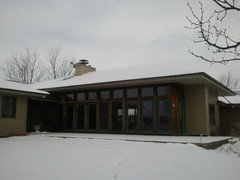
David J
5 years agoWe installed Eagle Windows and doors in several houses we built 10-15 years ago. There have been numerous problems with leaks and also with the exterior finish. We stopped using them soon after Anderson purchased the company and I would not use them again.
askathome
5 years agoFrost and ice builds on the inside of our wood frame Eagle casement windows installed in 2012. Excuse me for not using technical jargon here but this is really frustrating. Eagle was originally a northern Michigan company. It gets cold in Michigan!! And the windows were not cheap! They’ve sent replacement glass for two of the windows. We have yet to have a glass company replace them as it’s winter. Have no idea what they will charge. All of the Eagle windows in our house including and especially the stationary windows look like the set of “Frozen”. I’m applying dry heat to melt the frost and ice with a hair dryer so that the wood and trim does not get further damage. Should we get a lawyer? We bought them after Anderson took over.East Bay 10
5 years agoTime frame puts you within the 20/10 warranty. I would work with the dealer that sold the windows (to you or the builder) AND Andersen before seeking legal representation. Do some internet work to see what others have/are doing. If nothing comes of that. Then, involve the lawyers. In most cases, lawyers just tend to anger everyone except the lawyers and you end up paying for it.
askathome
5 years agoThanks for the response East Bay. just talked to dealer who is contacting Manufacturer. Sadly, our contractor died this past year.
John Willi
5 years agoI'll just make a couple general comments:
1) For the record, my Eagle casements and awnings have been excellent. Installed in 2010 there have had zero issues. That said, when the framer was ready to install I had the Eagle representative inspect the installation of the first window and explain in detail how they needed to be installed. I think that was critical.
2) Not all window designs are the same and although there are general "good practice" installation guidelines like mentioned earlier, each manufacturer has a specific set of installation requirements. It's hard to find framers that know every window, and unfortunately many don't read the enclosed installation protocol. It's my belief that much of the window failures come from not following the manufacturers procedure. Of course, any window can't be expected to survive a faulty architectural design. And when you do have failure, you have the trifecta of blame of the manufacturer, builder (framer), and architect, which usually gets ugly with the client held hostage.
I hope this ends happily. Just watch out where the blame is laid.
toddinmn
5 years agoI don’t see how replacing the glass will help unless they are leaking air between the glass pack and sash. Maybe check to see if the frame is sealed to the rough opening.
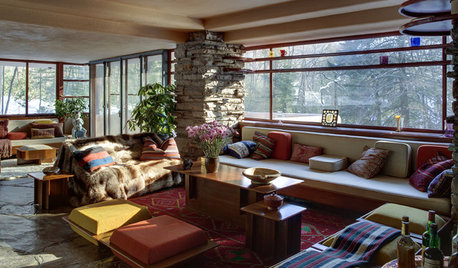
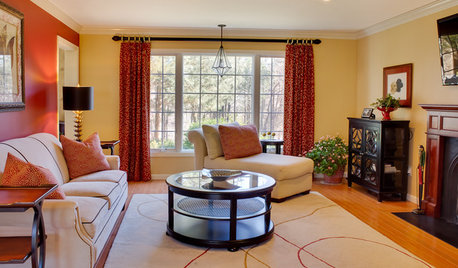
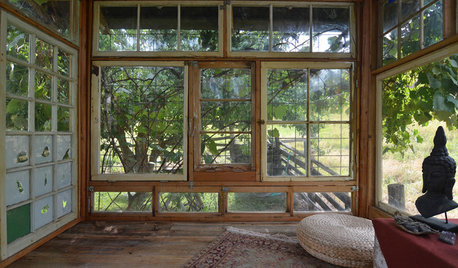



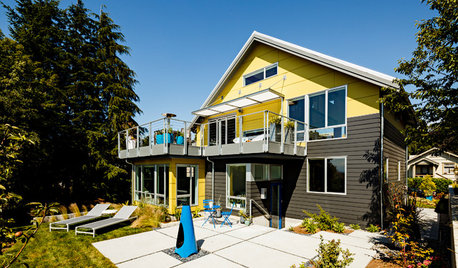
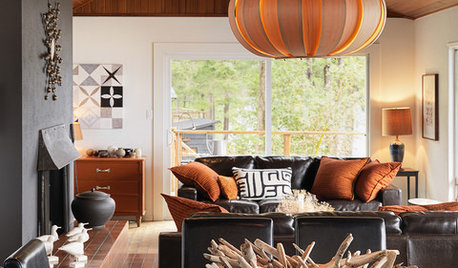
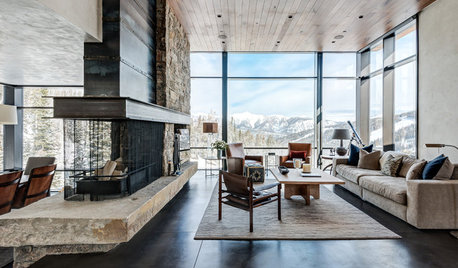
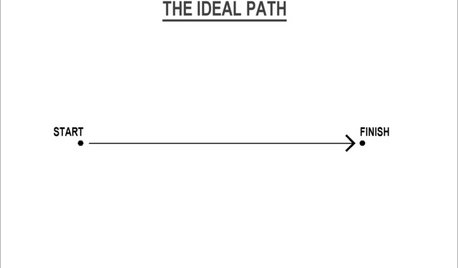







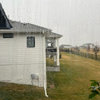


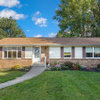
catalyst-cprOriginal Author